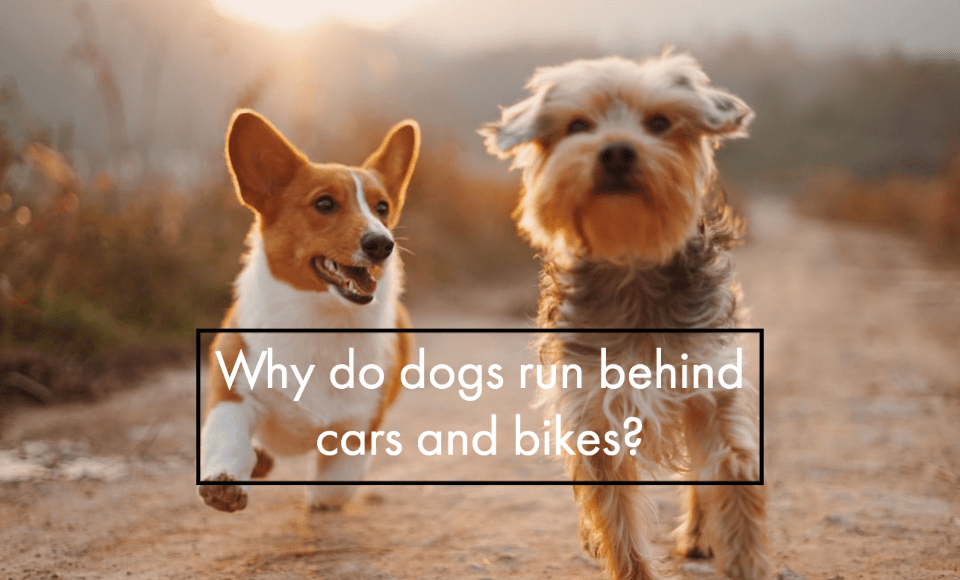It was pleasant, sunny weather when Ricky decided to go out for an early morning exercise with his dog Dumbo. While they were coming closer to a nearby park, a man in his bicycle passes by Ricky and his dog. Ricky was so shocked when Dumbo suddenly speeds up running and chase the man bicycling. Despite being tired after his long jog, Ricky ran as fast as he could while calling his dog. It was the first time that Dumbo chased someone outside their home.
Have you ever experienced being chased by a dog? Why did the dog chase you?
Why dogs chase humans?
When your dog was trained with some exercises that include running since his puppyhood, he will perhaps carry that behavior when he grows up. His brain will recall the fun times running with you at the park or and chasing you or a thing you throw away. It was an exciting and fun day for both of you. However, a dog chasing a human or a vehicle is not always fun and good. Sometimes it’s hard for your dog to differentiate between what he can chase and what he can’t, to him, it’s all fun, but that fun can quickly turn into an accident.
It’s excusable if he’s trying to protect you or your property from a thief. However, with some innocent children pass by your yard, or a jogger was having an innocent morning run, and your dog suddenly chases them, you might be in trouble.
Dogs descended from wolves, and perhaps they have inherited some of the dominant traits and instincts that have evolved over generations. They prey drive, for example, is one best reason why they have this chasing nature. This is a survival instinct for the wolves when hunting other animals for their food. However, domesticated dogs do not need to chase prey as they are served with food on their bowls. Yet, the instinct for self-preservation still exists within them and manifests in a variety of ways.
Additionally, some dogs bred to chase down, capture, carry, or kill other animals. Some examples are retrievers that are great at pursuing leads, gently grabbing or biting them, and bringing them back to their owners. These dogs are great hunting companions. They can provide support but keep the prey intact. Terrier breeds, such as the Yorkshire Terriers, were purposely bred to chase and eliminate rodents and other smaller pests.
Lastly, dogs chase to protect their territory. If someone strange to them enters their area, such as a delivery guy or a mailman, dogs usually bark and get ready to attack someone who seemingly has intruded their personal space.
Training tips to help stop car-chasing:
- Do not chase the dog because it makes them run more. Luring him with food or treat won’t work either.
- In a firm tone and voice, call your dog by his nickname. This will get your dog’s attention immediately as he recognizes the name. Calling him with his actual name will make him run away from you as he knows that there is something wrong, he has done, and he will then be punished.
- Training starts at home. Make your commands simple such as the use of single words. Throw toys for your dog, and immediately command him to “leave” or call him to you. If he does not respond accordingly, try to enforce your command with a firm tug on the lead. Practice this routine until he responds appropriately. It is very important to offer a reward “every” time he responds quickly and correctly during training.
- Request someone to run, cycle, or drive past you and your dog. Try to command your dog to “stop” or “leave” and observe if he attempts to chase. Keep practicing until your dog no longer chases or stops 100% following your voice command. Always pay a reward to your dog’s correct behavior and never reward failure to adhere instantly to your command.
- For your next walk outside your home, try to bring some delicious treats for your dog or bring his favorite toy. While you are walking, whenever you see him looking at a car, call his name. When he turns toward you, give him the delicious treat or whip out the toy and wave or throw it for him. But if it doesn’t work with him, wiggle a treat or his toy in front of his nose and lure his head around toward you. When he responded correctly, give them to him. Repeat this often every time a car passes by until your dog automatically looks at you in anticipation of treats or a game whenever he sees a car moving.

